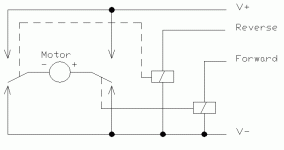paulhomolak
Guest
P
Great Site...First time on it. Looking for a solution to prevent relay arcing, buring/welding up the contacts. The system is low voltage, 24vdc. Polarity remains the same, but it reverse's once every hour for approx. 20 impulses, which is the correction cycle. This is a master clock system. I have read that a diode placed parallel with the load will supress the arc in the relay and to connect the cathode side of the diode to the positive. But since the polarity reverses during the correction cycle will this still work.
Any help would be greatly appreciated.
Any help would be greatly appreciated.






